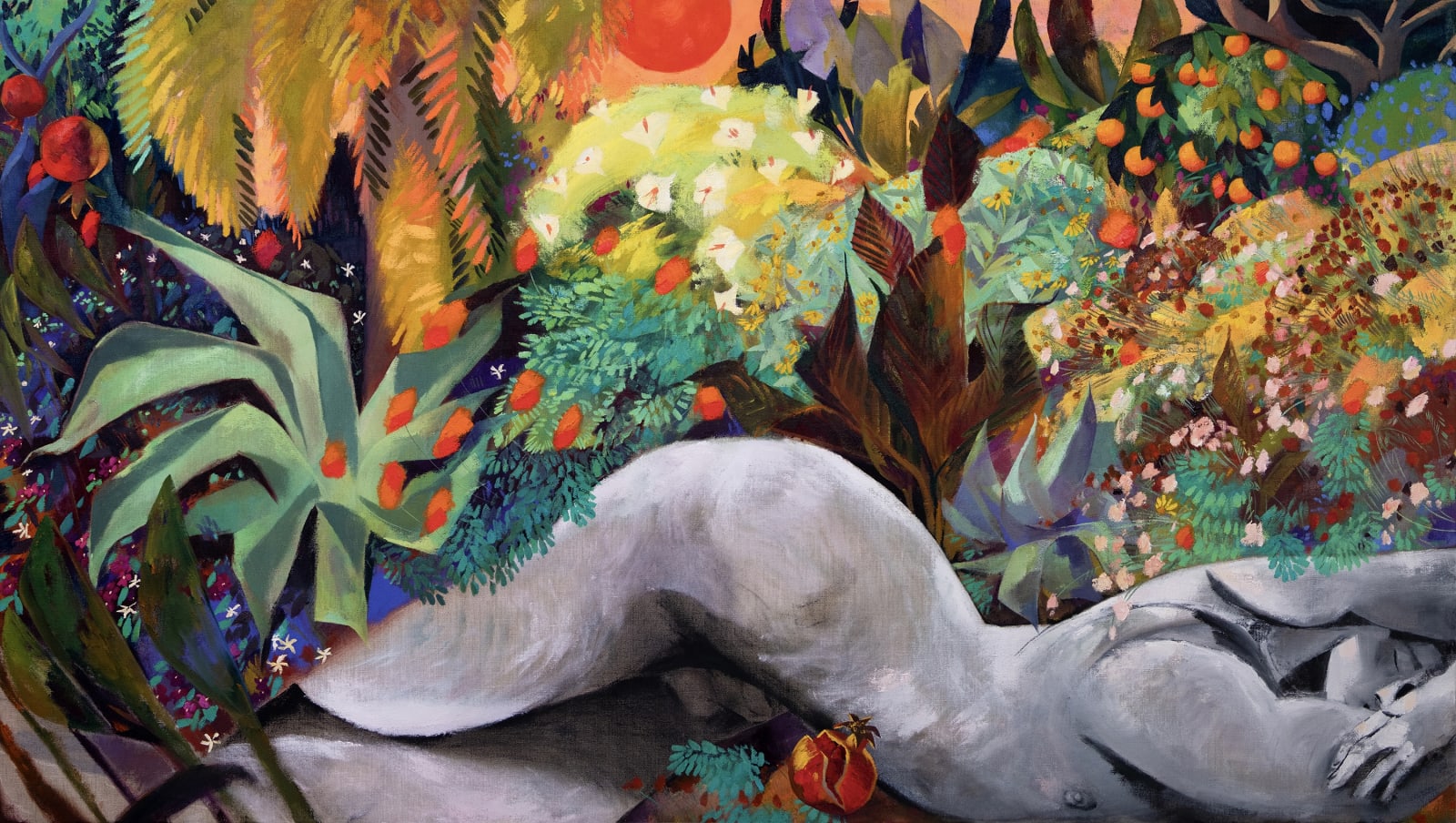When did you begin exploring ideas of queer bodies and nature?
I began exploring the idea of queer bodies in nature in 2020, actually as a result of COVID lockdowns. I began doing Zoom portrait sessions with a lot of queer men around the world during that time where we were all stuck at home. It was a great way to connect and feel the energy of drawing people from life when that wasn’t an option. At the same time, I was also drawing in and around our garden in New York, where we lived at the time. As I worked on both series simultaneously, I began to notice parallels between drawing figures and the landscapes, and the sense of energy and connection that came from both. Connecting with other queer people and connecting with nature both felt like refuge during that time, and it still does.
The exhibition’s name, Between Garden and Wilderness, and content refer to the beauty of nature, both controlled and wild. Do you have experience with gardening, or is it a motif that represents more?
I love gardening, both as an activity and as a symbol. The two pieces At the Threshold and Echoes Beneath are inspired by the garden that my husband and I have planted in Southern California. I think there is a richness to the experience of planting something and watching it grow over the years, and it really is a similar process to painting. There is a constant balancing of color, texture, and shape, but with the added elements of time and growth. I think that gardens, in contrast to “wilderness”, are a mixture of intention, cultivation, and patience. Being in wild nature is about allowing the natural world to absorb into your sense of self, while gardening is about projecting your sense of self into nature and changing it.
Are there any specific places that have inspired the lush landscapes in Between Garden and Wilderness?
All of the landscapes in this series depict fantastical versions of real places in Southern California. At the Threshold and Echoes Beneath are based on drawings of the home garden I’ve made with my husband in Riverside, and When Mountains Meet and Like A River Flows both depict the nearby San Bernardino mountain range. I often make plein air drawings when I go out hiking, and then transform them back in the studio into figurative works. The shapes within the hills and mountains, or a piece of driftwood across a stream awaken as figures within the landscapes.
Your paintings are all vibrant and colourful, but distinct in their palettes. What inspires your colour choices?
I like to think of color intuitively. Often, the color palettes begin with plein air pastel studies. I think that drawing from nature provides a richness and a spontaneity that allows for a more emotional and sensory response to color, than a more academic approach does. It also allows for experimentation, and playfulness. The black and white figure in Echoes Beneath, for instance, began as the white stucco wall that borders our garden. The contrast between the black and white portions and the explosive color found another parallel in the black and white boulders and driftwood I drew on a mountain hike for Like A River Flows. Color, for me, always starts with an experience in nature, and the vividness of my color palettes is a way to exaggerate and translate that feeling into paint.
Do you ever use models for your abstracted bodies, or are they from your imagination?
Most of the figures in my works are based on drawings I do from life of my friends, my husband, or models. I also draw from video reference of myself, which I find gives a sense of movement to self-portraiture. In the same way that I find plein air drawing to be the best way to exaggerate color in landscape, I find drawing from life to be the best way to find the natural abstraction that bodies have. Shapes connect and move in a way in life that it is hard to feel in a static photographic reference.
For more information please email info@rhodescontemporaryart.com





